8.4 /10 1 Votes8.4
3.3/5 Abandonware DOS | 4.2/5 My Abandonware 5/5 Emuparadise Initial release date June 1981 | |||||||||||||||||||||||||||||||||
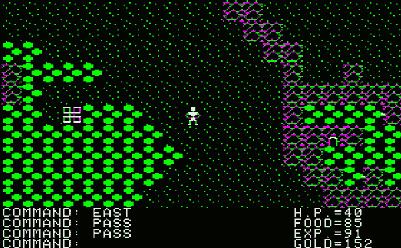 | ||||||||||||||||||||||||||||||||||
Publishers Origin Systems, Electronic Arts, Sierra Entertainment, California Pacific Computer Company, Fujitsu, Pony Canyon Similar Ultima games, Origin Systems games, Role-playing video games | ||||||||||||||||||||||||||||||||||
Ultima, later known as Ultima I: The First Age of Darkness or simply Ultima I, is the first game in the Ultima series of role-playing video games created by Richard Garriott. It was first published in the United States by California Pacific Computer Company, which registered a copyright for the game on September 2, 1980 and officially released it in June 1981. Since its release, the game has been completely re-coded and ported to many different platforms. The 1986 re-code of Ultima is the most commonly known and available version of the game.
Contents
- ultima i the first age of darkness speedrun 36 18 pb wr
- Gameplay
- Setting
- Characters
- Story
- Development and release
- Reception
- References
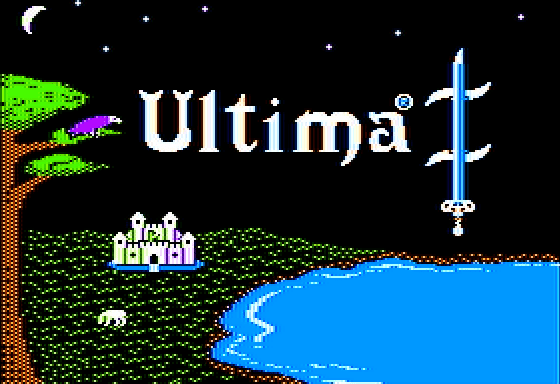
Ultima revolves around a quest to find and destroy the Gem of Immortality, which is being used by the evil wizard Mondain to enslave the lands of Sosaria. With the gem in his possession, he cannot be killed, and his minions roam and terrorize the countryside. The player takes on the role of 'The Stranger', an individual summoned from another world to end the rule of Mondain. The game follows the endeavors of the stranger in this task, which involves progressing through many aspects of game play, including dungeon crawling and space travel.
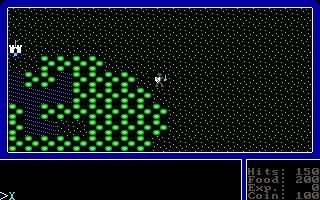
The game was one of the first definitive commercial computer RPGs, and is considered an important and influential turning point for the development of the genre throughout years to come. In addition to its influences on the RPG genre, it is also the first open-world computer game.
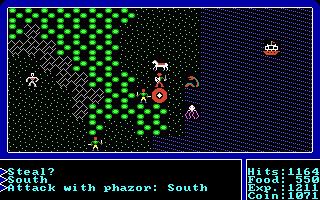
ultima i the first age of darkness speedrun 36 18 pb wr
Gameplay
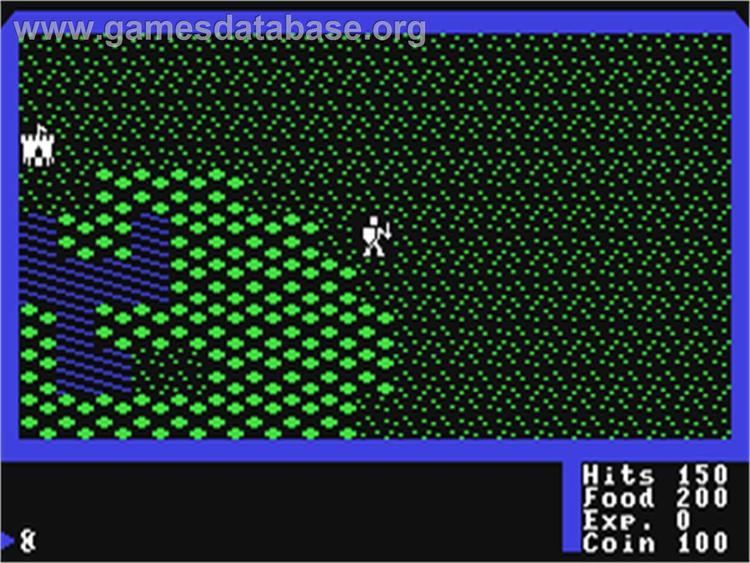
The world of Ultima is presented in a variety of different ways. The overworld is projected in a topdown, third person view, while dungeons are displayed in first person, one-point perspective. In both scenarios the player character is controlled with the keyboard directional arrows, and shortcut keys are used for other commands, such as A for attack and B for board.
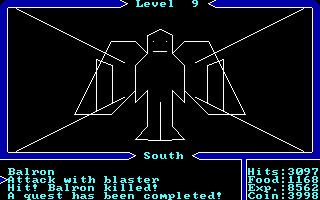
Character creation at the start of Ultima is not unlike a simplified version of traditional tabletop role-playing games. The player is presented with a number of points to distribute between various statistics that will affect his competence in certain aspects of gameplay. For example, adding numerous points to the strength statistic will increase the potential amount of damage inflicted on a foe. Once this portion of creation has been completed satisfactorily, the player is given a choice of four races: Human, Elf, Dwarf and Bobbit (a hobbit-like creature). Depending on the race picked, points will be added to various statistics (e.g.: Elves are often seen as being lithe and agile, so points are added to the agility statistic). Once a race is chosen, the player is given a list of four classes to choose from, which also distribute more points to appropriate statistics. These classes are fighter, cleric, wizard and thief. The player is also asked to choose a gender for their player character, though this is purely cosmetic.
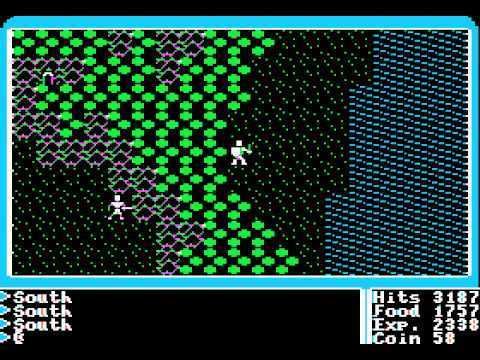
Four other statistics are important and imperative to successful game completion. These are hit points, food, experience points and coin (gold in the original release). Hit points determine the health of the character; the more HP the character has, the further away they are from death. They can be obtained in a variety of ways, including the acts of emerging alive from a dungeon and of giving tribute payment to one of the eight lords of Sosaria. Food is consumed every tile that the character moves, except in castles and towns, and if the food supply drops to zero, the player will starve. Food can be bought in towns to prevent this situation occurring. Experience points are received by successfully doing battle with monsters. They determine when the character levels up; one thousand points are needed to progress to the next level. A vital item near the end of the game cannot be obtained until the player has reached the eighth level. Coin, or gold, is used to buy things in the game world, such as weapons, spells and food, and can be obtained by defeating monsters or rescuing princesses from castles.
The magic and combat systems in Ultima are simplistic. Spells are bought from shops and used as consumable items, each spell purchase having one use only. Combat is against randomly appearing enemies; it consists of each party attacking the other until one has fled or been defeated. In the original release of the game, enemies in the outdoor areas do not move around in any way but simply appear at the player's current location and immediately initiate attack; enemies in the dungeons are also random, but can move and follow the player. Buying more proficient weapons and armor improves the chances of succeeding in battle.
The game also sports an arcade-like first-person space shooter section of gameplay, an element that only appeared in Ultima and not the subsequent games in the series. The player participates in a real-time space combat environment, confronted with enemy spaceships that they must shoot down in order to progress further along the story. Richard Garriott says he added this just because he wanted to fill up every space there was on the disk, and do everything he possibly could.
Setting
Ultima is set in the fictional world of Sosaria, a land broken into four different continents. The land is ruled by a total of eight different lords, two for each of the world's four land masses. The four continents contain two castles each, where quests can be obtained by the player. There are two types of quests given out in the castles—one entails visiting a certain location on the main map, the other killing a specific type of monster in the dungeons. Fulfilling the former type of quest gives stat boosts; the latter gains the player an important item needed to reach the endgame.
There are also a variety of towns where different goods and services can be purchased. The world map also houses many dungeons to be explored, and is populated by forests, mountain ranges, lakes and oceans. All towns are equivalent (and they all look exactly alike in the original release of the game), as are all dungeons (their maps are different, but are not designed but rather randomly created); castles differ only in the different quests that may be assigned. Due to the nature of the game's story, Sosaria is inhabited by numerous monsters and beasts that attack the player character on sight. There are also ruins and places of interest on each continent (usually in somewhat hard-to-reach places such as small islands) that the player can enter in order to receive rewards, usually in the form of a weapon or stat boost, or in order to solve quests.
Characters
The two main characters featured in Ultima I are Mondain, the evil wizard antagonist who has induced a reign of terror over the world of Sosaria, and the protagonist, a character of the player's choosing. Character creation is open-ended and the protagonist could be anyone from an elf wizard to a human warrior. The game features Lord British from Richard Garriott's first game, Akalabeth, and the introduction of characters Iolo and Shamino. These three characters become staples of nearly all future Ultima games (see List of Ultima characters).
Story
The story of Ultima I revolves around the evil wizard Mondain and his rule over the kingdom of Sosaria. According to the game's back story, Mondain created an evil gem over 1000 years ago that granted him immortality. Since then, Mondain has released monsters and beasts upon the land that ravage the villages and towns of Sosaria and cause most of the nobles to bicker amongst themselves. In an effort to stop Mondain's dominion, Lord British searches for a person to bring about the wizard's end. This call is answered by the player.
The player is informed that the only way to defeat Mondain is to travel back in time and kill him before the gem of immortality is created. The majority of the game is spent searching for a time machine, and a way to activate it. Four of the lords in the game, one from each realm, hold a gem that will allow the time machine to work once all four gems have been found. In exchange for the gem, the lord will ask the player to complete a quest that involves traveling into a dungeon and killing a specific creature. Once this has been achieved, the lord will hand over his gem.
The time machine itself also needs to be found. Purchasing a space shuttle and traveling into outer space is a prerequisite of this —the player must become a space ace, by destroying 20 enemy ships, in order to complete the game. Once this task has been completed, rescuing a princess will reveal the location of the time machine, which always appears to the north of the castle in which the princess was held prisoner. The main character will then travel back in time and face Mondain before he has completed the gem of immortality. Destroying the gem is a requirement for beating the game as well as killing the wizard himself. Once Mondain is dead, the player is transported one thousand years into the future and rewarded by Lord British. The game narration does not attempt to explain away the temporal paradox caused by killing Mondain 1000 years in the past, thus preventing the events which cause the player to be called to the world in the first place.
Development and release
Richard Garriott started development on Ultima after the unexpected success of his previous game, Akalabeth. Large sections of Akalabeth were used as subroutines within Ultima, to create the first-person dungeon sections of the game. Towns, quests, a plot and a user interface were all added to the original Akalabeth code before Ultima was completed. Star Wars elements were also added, including spaceships and lightsabers.
Development of Ultima was done during Garriott's freshman year at the University of Texas with the help of a friend, [| Ken W. Arnold]; they finished it in less than a year. Ultima was coded in Applesoft BASIC on an Apple II computer, and Arnold wrote code in assembly language for the tile-based graphics system, the first game in the genre to do so. The game may be the first to use more than one floppy disk side.
Unlike Akalabeth, with the commercial sale of which was an afterthought to a hobbyist endeavor, Ultima was approached with a much more professional attitude right from the start of the project. The game was first planned to be called Ultimatum, but it was discovered that the name was already in use by a board game company, and so it was shortened to Ultima. The California Pacific Computer Company published Ultima in 1981 for the Apple II only. By June 1982 it sold 20,000 copies, and went on to sell 50,000 copies.
Sierra Online re-released Ultima for the Atari 8-bit computers. In 1986 Origin Systems completely re-coded the game in assembly and re-released it.
Because the 1986 remake was re-coded entirely in Assembly, it had significantly improved running speed and was able to handle superior graphics. Some small cosmetic changes to the content were also made, such as the addition of another castle map variant and three new city maps, the introduction of traveling monsters in the outdoors section, and the division of the money the player has into separate "copper", "silver" and "gold" coins. It was first released for the Apple II on December 23, 1986 as Ultima I: The First Age of Darkness. Ports for the Commodore 64 and DOS/EGA were also released. Many subsequent releases were made in later years, including the 1989 version for the MSX2, published only in Japan by Pony Canyon, as well as an Apple IIGS specific port in late 1994 by Vitesse. In 1997, the DOS/EGA version of Ultima was released by Electronic Arts as part of the Ultima Collection.
Reception
Softline stated in 1981 that "Ultima seems to be the best" available Apple II role-playing game. The magazine called the graphics "impressive" and concluded that it "retails for $39.95 and is well worth the price". Computer Gaming World in 1991 and 1993 called the game "truly epic in scope", stating that it was among the first to have outdoor settings and NPC conversations. While noting the "unbalanced combat system", the magazine concluded that Ultima I was "a classic not to be missed".
